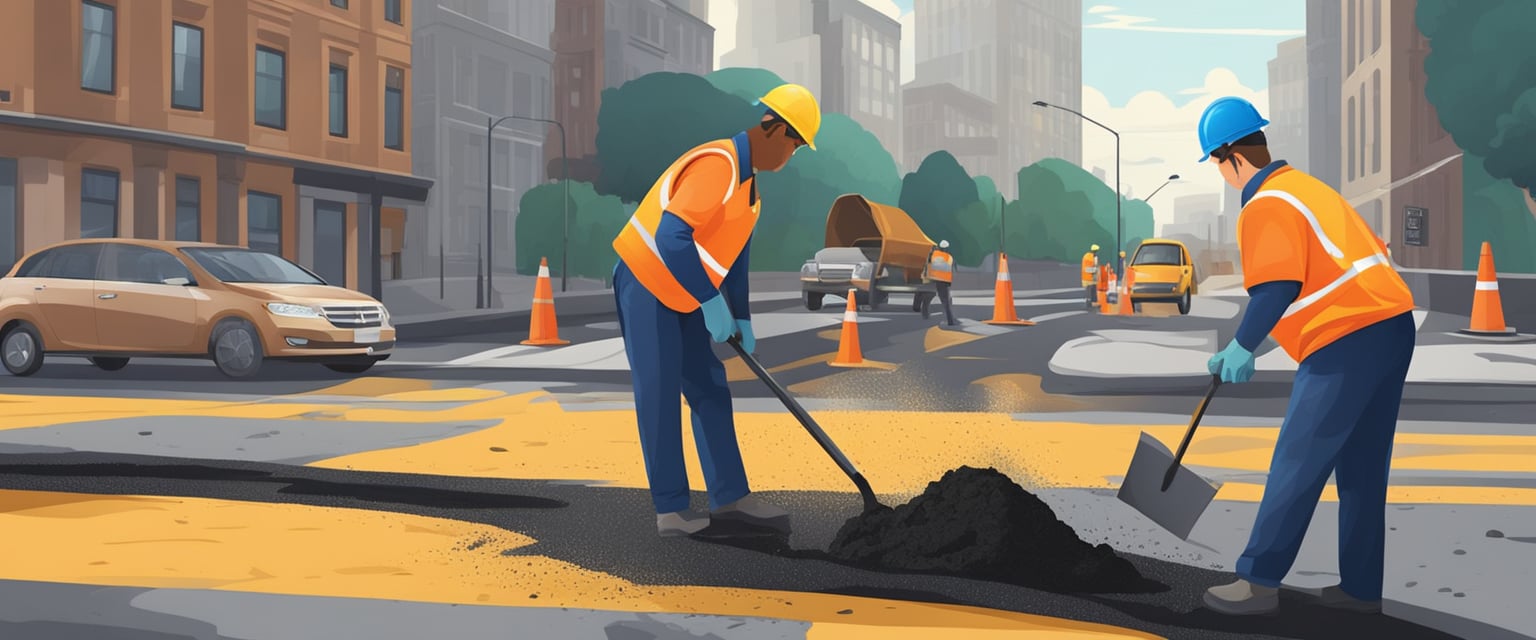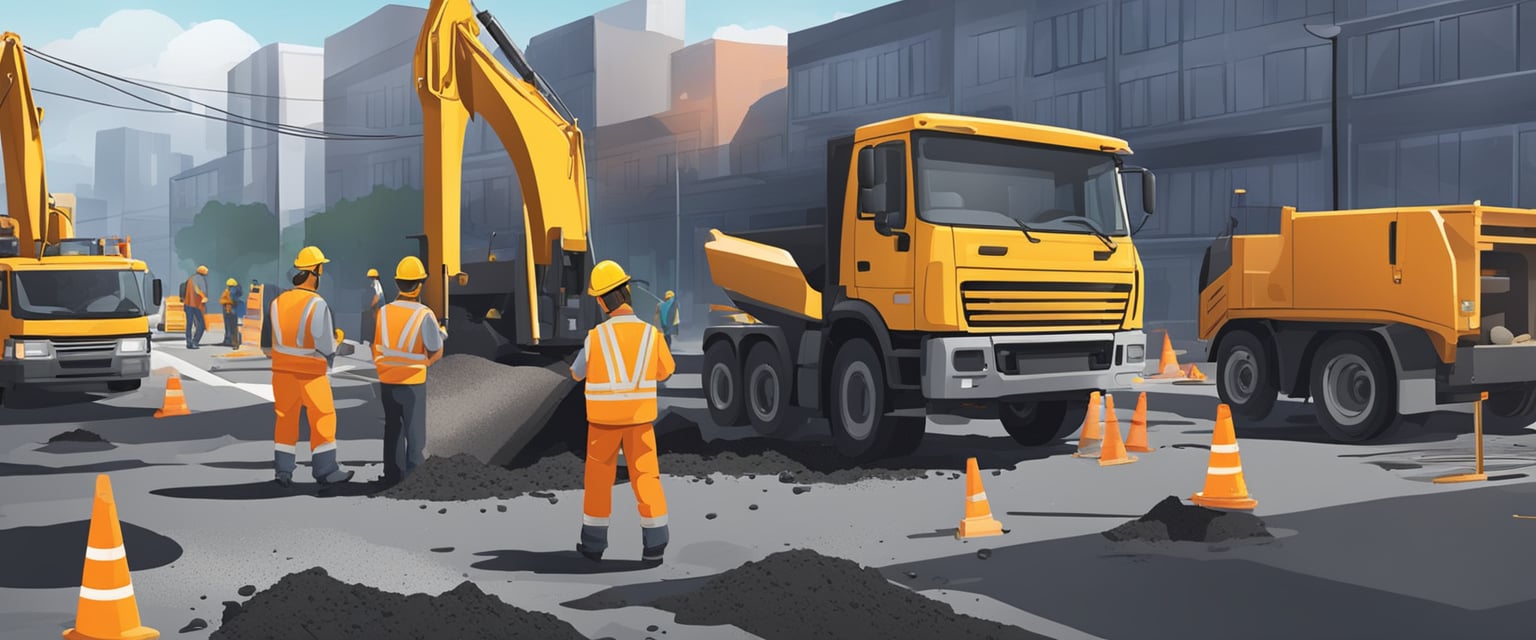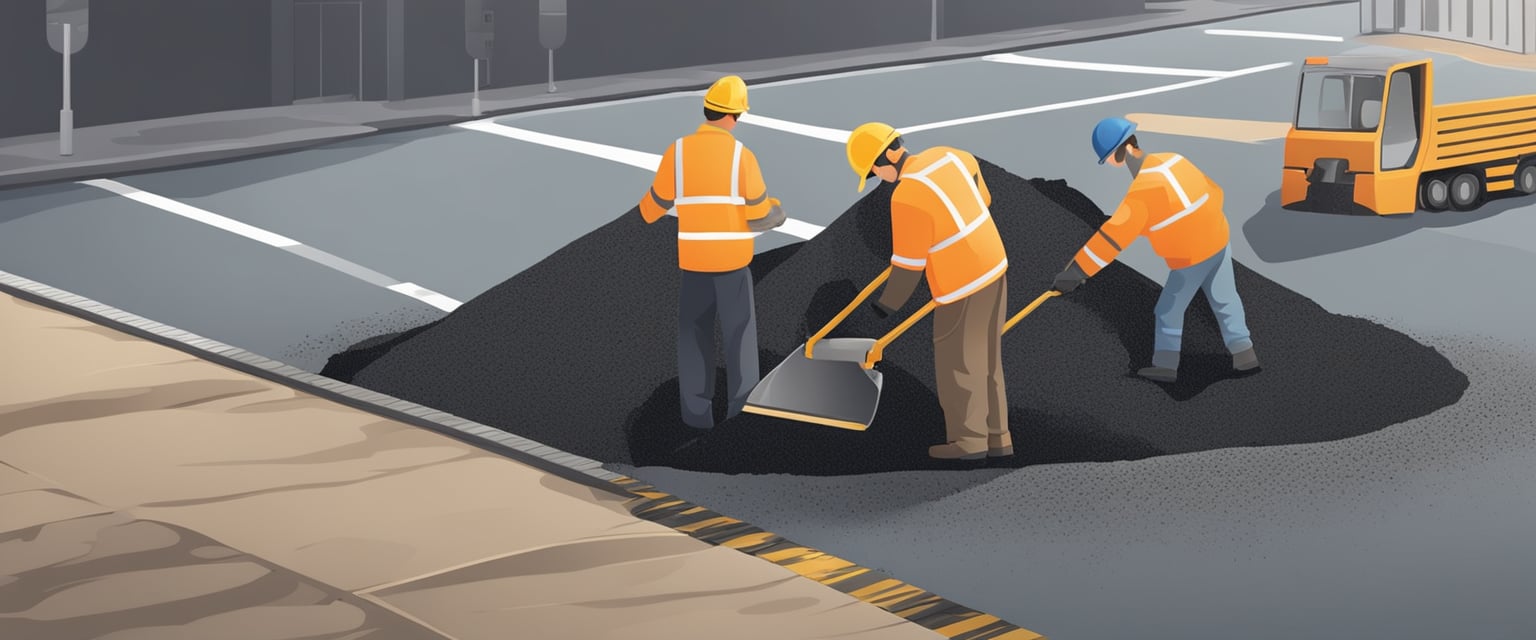Pothole Patching
Pothole Patching Techniques for Durable Road Repair
Pothole patching is a critical maintenance procedure for roads, parking lots, and driveways that directly affects the smoothness of daily commutes and the lifespan of the pavement. Potholes are more than just a driving nuisance; they can lead to damage to vehicles, traffic disruptions, and even pose safety risks. Addressing these road imperfections promptly and effectively is therefore essential. Repair methods can vary from temporary fixes to more permanent solutions depending on the severity of the pothole, the type of road surface, and weather conditions.

The process of repairing potholes involves various techniques, with methods ranging from simple do-it-yourself fixes to advanced solutions that are environmentally friendly and sustainable. For smaller potholes, ready-to-use cold patch products offer a quick remedy that almost anyone can apply. Larger and more problematic potholes, however, often require professional intervention with equipment designed to clean, fill, and compact the repair area for a lasting fix. The advancement of new materials and methods continue to improve the efficiency and durability of pothole repairs, contributing to safer and more reliable roadways.
Key Takeaways
- Pothole patching is crucial for maintaining road safety and vehicle condition.
- Repair techniques range from basic applications to professional interventions.
- Innovations in repair materials enhance the effectiveness of pothole solutions.
Understanding Potholes

Potholes are a common roadway issue caused by environmental and structural factors leading to pavement degradation and vehicular damage. Effective reporting and prevention strategies are essential to mitigate their impact on traffic and safety.
Causes of Pothole Formation
Potholes typically form when water penetration weakens the pavement structure. Water seeps into the pavement through existing cracks and under the action of freeze-thaw cycles and other weather conditions, the pavement material begins to break down. This process is accelerated when the surface is subjected to continuous stress from vehicles.
Recognizing Pavement Distresses
The precursor to potholes is the presence of minor pavement distresses such as cracks, depression, or a dip below the surface. These imperfections allow for more water infiltration, exacerbating the deterioration of the pavement if left unattended.
The Impact on Vehicles and Traffic
Potholes can present a significant hazard to vehicles, with the potential to cause damage to tires and suspension systems. For drivers, they are a safety concern and can lead to accidents. On a larger scale, potholes disrupt traffic flow and increase vehicle operating costs.
Reporting and Tracking Potholes
A proactive approach involves the systematic reporting and tracking of potholes. This enables authorities to respond promptly to repair needs and gather data for future pothole prevention strategies.
Prevention and Maintenance Strategies
Effective pothole prevention includes regular maintenance to preserve the integrity of the pavement. Drainage improvements and consistent pavement preservation efforts play a crucial role in extending the lifespan of the road surface and preventing the formation of potholes.
Pothole Patching Techniques
Effective pothole patching techniques are essential for road maintenance and vehicle safety. Different methods are used based on the severity of the pothole, weather conditions, and available resources.
Cold Mix Patching
Cold mix patching is a cost-effective method typically used for potholes in winter conditions. This technique involves using a mixture of asphalt, stone, sand, and liquid asphalt cement that can be easily applied at cooler temperatures. Cold patch materials facilitate quick repairs and are practical for temporary fixes, especially in areas where hot mix cannot be used due to low temperatures.
Hot Mix Patching
Hot mix asphalt patching is a more durable method and is preferred during summer months. This method employs hot asphalt, which is heated and poured into potholes. Hot mix is known for its long-lasting results, making it suitable for repairing larger or more problematic potholes. The longevity and stability of this repair are much higher compared to cold mix patching.
Patching Procedure and Compaction
Patching procedure is a critical aspect that influences the longevity of the repair. It starts with cleaning the pothole, applying a tack coat, and then filling it with patching material. Proper compaction is achieved through the use of a tamper or vibratory roller to compress the materials into layers, ensuring they are compacted to resemble the density of the surrounding pavement for optimal integration and durability.
Selecting Patching Materials
When selecting patching materials, factors such as the weather, traffic conditions, and the pothole’s size must be considered. Cold mix is usually selected for temporary fixes or during cold weather, whereas hot mix asphalt is chosen for its durability and suitability in warmer conditions. The choice of materials directly impacts the repair’s effectiveness and lifespan.
DIY Pothole Repair
Repairing potholes in a driveway not only improves the appearance but also extends the service life of the asphalt. A successful DIY repair requires the right tools, materials, and adherence to safety best practices while providing a cost-effective solution.
Tools and Materials
To carry out a pothole repair, one will need:
- Shovel: for removing debris from the pothole.
- Broom or leaf blower: to clean the area after digging.
- Wet saw with a diamond blade: for cutting jagged edges cleanly (if desired).
- Tack coat: to ensure proper adhesion of the new asphalt.
- Asphalt repair material: the actual patching compound.
Step-by-Step Pothole Filling
- Cleaning the Area: Use the broom to sweep out all loose material.
- Cutting the Hole (optional): For a clean edge, cut with a wet saw outfitted with a diamond blade.
- Applying Tack Coat: Cover the clean, dry pothole with a tack coat to promote bonding.
- Filling the Pothole: Shovel the asphalt repair material into the pothole and spread evenly.
- Compaction: Tamp the patching material down until compact and level with the driveway surface.
Safety and Best Practices
When performing DIY pothole repairs:
- Wear gloves, protective eyewear, and a dust mask, especially when sawing.
- Ensure the repair area is dry and free from loose debris to promote adhesion.
Assessing Patch Effectiveness
After patching, one should check if the repair is level with the surrounding surface and if there has been proper compaction. Signs of a good repair include a smooth transition from the old pavement to the new patch and no significant movement when applying pressure.
Evaluating Cost-Effectiveness
DIY pothole repair can be cost-effective, saving the expense of professional services if done correctly. Using high-quality materials and following the proper steps can result in a permanent repair that prevents the need for repeated fixes.
When one approaches blacktop repair with a DIY mindset, armed with the right knowledge and materials, the result can be as effective as professional jobs. The key is to perform each step of the process methodically and to adhere to safety guidelines to achieve a permanent and cost-effective repair.
Pothole Patching Innovations
The advancement in pothole patching is marked by novel techniques and materials that aim to increase the durability of repairs while considering cost and environmental impact.
Advanced Patching Methods
Innovative technologies, such as spray-injection patching, provide efficient methods to address potholes. Techniques like this allow for rapid repair, improving the service life of the pavement.
Improving Durability and Performance
Durability is enhanced through the use of high-quality asphalt mixes and concrete designed to withstand varying temperatures and heavy traffic. These materials not only increase performance but also extend the service life of road repairs.
Environmental Considerations
Sustainability becomes a focus with the introduction of eco-friendly materials in pothole repairs. These innovations help to minimize the environmental impact by utilizing recycled materials and reducing the carbon footprint associated with road maintenance.
Enhancing Cost Efficiency
Budget-conscious repairs benefit from innovations that are not just durable but also cost-effective. These technologies and methods allow for better planning and resource allocation, saving on long-term maintenance costs.
Conclusion

Pothole patching is an essential component of road maintenance and greatly impacts safety. Effective repair methods enhance the longevity of road surfaces and contribute to the overall quality of transportation infrastructure. Common repair techniques vary in terms of cost, materials used, and durability.
- Cold mix asphalt is frequently utilized for temporary fixes due to its ease of storage and application.
- Hot mix asphalt is preferred for permanent repairs, requiring proper equipment and favorable weather conditions.
- Spray injection is a more innovative technique that can be applied quickly and in various weather conditions.
An evaluation of different methods indicates that preventive maintenance is more economical than reactive approaches. Agencies are urged to prioritize pothole repairs to prevent further deterioration and to ensure drivers’ well-being. Maintenance activities should include regular surveys and immediate attention to emerging road defects.
Research, such as the University of Minnesota’s study, confirms that responding promptly to early signs of distress in pavement prevents potholes from forming. Moreover, the studies suggest consistency in repair quality is critical for long-term road safety and functionality.
In summary, a strategic and proactive stance on pothole patching is indispensable. By investing in quality materials, up-to-date methods, and regular road checks, transportation departments can save on costs and improve road safety for all users.
Frequently Asked Questions

This section addresses common inquiries regarding pothole patching, from materials and methods to cost-effectiveness and machinery benefits.
What materials provide the most durable solution for filling potholes?
For a long-lasting repair, the City of Lincoln, NE advocates using quality materials like hot mix asphalt, which adheres well to the old asphalt and is less likely to come out as compared to temporary fixes like cold patch asphalt.
How does one effectively assess the cost of pothole repairs?
The cost assessment should include the size and depth of potholes, the material costs, labor, and equipment needed for repairs. One must also consider the longevity of the repair method chosen to ensure cost-effectiveness.
Can you describe the step-by-step procedure for patching potholes?
The Virginia Department of Transportation outlines the steps: clean the pothole of debris and water, fill it with patching material, compact the patch to match the surrounding road surface, and finally, seal the patch to protect it from water penetration.
What are the advantages of using a pothole patching machine?
Pothole patching machines offer enhanced durability and a more consistent repair as compared to manual methods. They reduce labor costs and can also work in a variety of weather conditions.
Could you provide a detailed method statement for pothole patching?
The method statement includes identifying the area, removing standing water, cleaning the pothole, applying a tack coat if necessary, filling the pothole with the appropriate material, compacting the fill, and sealing the surface against water ingress.
What are some cost-effective techniques for patching asphalt?
Cost-effective techniques involve using cold mix asphalt for temporary fixes or during colder months, and employing preventative measures like crack sealing to minimize the formation of new potholes.



